
Lucasfilm Games is an American video game licensor that is part of Lucasfilm. It was founded in May 1982 by George Lucas as a video game development group alongside his film company; as part of a larger 1990 reorganization of the Lucasfilm divisions, the video game development division was grouped and rebranded as part of LucasArts. LucasArts became known for its line of adventure games based on its SCUMM engine in the 1990s, including Maniac Mansion, the Monkey Island series, and several Indiana Jones titles. A number of influential game developers were alumni of LucasArts from this period, including Brian Moriarty, Tim Schafer, Ron Gilbert, and Dave Grossman. Later, as Lucasfilm regained control over its licensing over the Star Wars franchise, LucasArts produced numerous action-based Star Wars titles in the late 1990s and early 2000s, while dropping adventure game development due to waning interest in the genre.
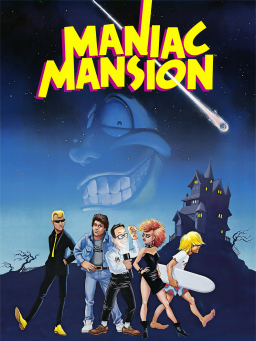
Maniac Mansion is a 1987 graphic adventure video game developed and published by Lucasfilm Games. It follows teenage protagonist Dave Miller as he attempts to rescue his girlfriend Sandy Pantz from a mad scientist, whose mind has been enslaved by a sentient meteor. The player uses a point-and-click interface to guide Dave and two of his six playable friends through the scientist's mansion while solving puzzles and avoiding dangers. Gameplay is non-linear, and the game must be completed in different ways based on the player's choice of characters. Initially released for the Commodore 64 and Apple II, Maniac Mansion was Lucasfilm Games' first self-published product.
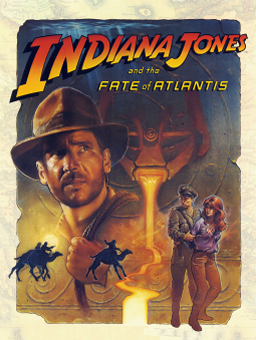
Indiana Jones and the Fate of Atlantis is a point-and-click adventure game developed and published by LucasArts and released in June 1992 for Amiga, DOS, and Macintosh. Almost a year later, it was reissued on CD-ROM as an enhanced "talkie" edition with full voice acting and digitized sound effects. The seventh game to use the script language SCUMM, Fate of Atlantis has the player explore environments and interact with objects and characters by using commands constructed with predetermined verbs. It features three unique paths to select, influencing story development, gameplay and puzzles. The game used an updated SCUMM engine and required a 286-based PC, although it still runs as a real-mode DOS application. The CD talkie version required EMS memory enabled to load the voice data.
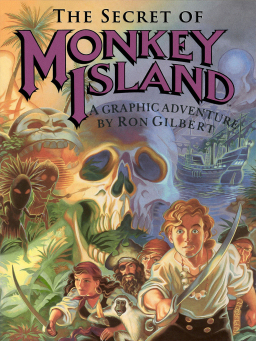
The Secret of Monkey Island is a 1990 point-and-click graphic adventure game developed and published by Lucasfilm Games. It takes place in a fictional version of the Caribbean during the age of piracy. The player assumes the role of Guybrush Threepwood, a young man who dreams of becoming a pirate, and explores fictional islands while solving puzzles.

Monkey Island 2: LeChuck's Revenge is an adventure game developed and published by LucasArts in 1991. A sequel to 1990's The Secret of Monkey Island, it is the second game in the Monkey Island series. It was the sixth LucasArts game to use the SCUMM engine, and the first game to use the iMUSE sound system. In it, pirate Guybrush Threepwood searches for the legendary treasure of Big Whoop and again faces off against the pirate LeChuck, who is now a zombie.

Hal Barwood is an American screenwriter, film producer, film director, game designer, game producer, and novelist.

From the late 1980s to the early 2000s, LucasArts was well known for their point-and-click graphic adventure games, nearly all of which received high scoring reviews at the time of their release. Their style tended towards the humorous, often irreverent or slapstick humor, with the exceptions of Loom and The Dig. Their game design philosophy was that the player should never die or reach a complete dead-end, although there were exceptions.
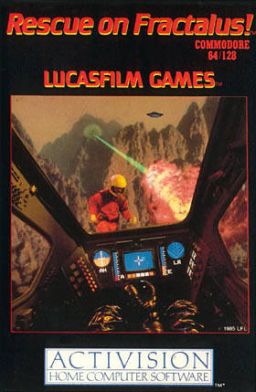
Rescue On Fractalus! is a 1985 first-person shooter computer game created by Lucasfilm Games. It was originally released for the Atari 8-bit family and the Atari 5200 games console. It was also ported to other popular platforms of the day, such as the Apple II, ZX Spectrum, Amstrad CPC, Tandy Color Computer 3 and Commodore 64. The game was one of the first two products from the fledgling Lucasfilm Computer Division Games Group led by Peter Langston. David Fox was the project leader and designer. Music was mainly composed by Charlie Kellner.

Brian Moriarty is an American video game developer who authored three of the original Infocom interactive fiction titles, Wishbringer (1985), Trinity (1986), and Beyond Zork (1987), as well as Loom (1990) for LucasArts.
Sinistar is a 1983 multidirectional shooter arcade game developed and manufactured by Williams Electronics. It was created by Sam Dicker, Jack Haeger, Noah Falstein, RJ Mical, Python Anghelo, and Richard Witt. Players control a space pilot who battles the eponymous Sinistar, a giant, anthropomorphic spacecraft. The game is known for its use of digitized speech and high difficulty level.
David Fox is an American multimedia producer who designed and programmed numerous early LucasArts games. He and his wife, Annie Fox, now work on educational software, web design, emotional intelligence content, online communities, emerging technologies, and writing books for children and teens.

Labyrinth: The Computer Game is a 1986 graphic adventure game developed by Lucasfilm Games and published by Activision. Based on the fantasy film Labyrinth, it tasks the player with navigating a maze while solving puzzles and evading dangers. The player's goal is to find and defeat the main antagonist, Jareth, within 13 real-time hours. Unlike other adventure games of the period, Labyrinth does not feature a command-line interface. Instead, the player uses two scrolling "word wheel" menus on the screen to construct basic sentences.
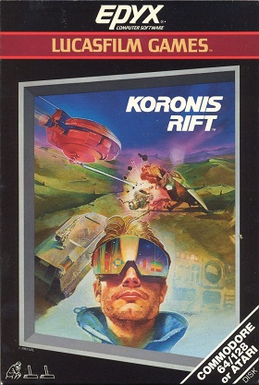
Koronis Rift is a 1985 computer game from Lucasfilm Games. It was produced and designed by Noah Falstein. Originally developed for the Atari 8-bit family and the Commodore 64, Koronis Rift was ported to the Amstrad CPC, Apple II, MSX, Tandy Color Computer 3, and ZX Spectrum.

Robert J. "RJ" Mical is an American computer programmer and hardware designer who has primarily worked in video games. He is best known for creating the user interface, Intuition, for Commodore's Amiga personal computer (1985), contributing to the design of the Amiga hardware, and co-designing, with Dave Needle, the Atari Lynx color handheld (1989) and the 3DO Interactive Multiplayer (1993).

Frank Randall "Randy" Farmer is an American game developer, co-creator with Chip Morningstar of one of the first graphical online games, 1985's Habitat. In 2001 he and Morningstar were the first recipients of the Pioneer Award by the International Game Developers Association. Farmer was involved with the creation of Yahoo! 360 and Communities.com, and has published several works on web and game development, social media, and online communities.
Lawrence Holland is an American video game designer and founder of the now defunct Totally Games. He is best known for the Star Wars: X-Wing series published by LucasArts.

PHM Pegasus is a ship simulation and action game released for the Commodore 64, Apple II, DOS, Amstrad CPC, and ZX Spectrum. The title refers to USS Pegasus (PHM-1), one of the Pegasus-class hydrofoils which were used by the U.S. Navy in the 1970s.

Sinistar: Unleashed is a 1999 action space shooter video game for Microsoft Windows. It was designed by Marc Michalik and Walter Wright and developed at GameFX, a small studio composed of former members of Looking Glass Studios. Originally titled Out of the Void, development of the project began in 1997 and had no relationship with the Sinistar franchise. After licensing the franchise from Midway Games that year, GameFX shifted the focus of the game and developed it as a sequel to the original Sinistar, which was released by Williams in 1982.
Gary Winnick is an American computer game designer, writer, artist, and animator who was the first artist hired by Lucasfilm Games. He co-designed Maniac Mansion, alongside Ron Gilbert, and created the comic book Bad Dreams.

Mystic Marathon is a horizontally scrolling arcade video game released by Williams Electronics in 1984. The game presents a race between horned, shoe-wearing, fantasy creatures called "Benkins" on a course covering small islands and the water between them. It was programmed by Kristina Donofrio (lead) and Ken Graham. Donofrio later worked on Joust 2: Survival of the Fittest.
















